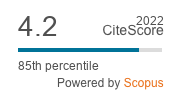Article | Open Access
The Viability of the “Responsibility to Prevent”
| Views: | 3194 | | | Downloads: | 1947 |
Abstract: The efficacy of the Responsibility to Prevent suffers from two key problems; causal indeterminacy, and a dependence on the political will of states, particularly the permanent five members of the Security Council. The vast array of factors which can be cited as potentially contributing to the outbreak of conflict and atrocity crimes mitigates against the determination of definite “conflict triggers”. This does not mean prevention is impossible but does limit the efficacy of “early warning systems”. The dynamics of the “four crimes” within R2P’s purview further limits the efficacy of prevention as the decision to engage in mass atrocities is taken in response to a perceived existential crisis. This significantly limits the scope for leveraging the “internal” aspect of R2P as the decision to commit these acts is invariably born from a belief that no other option is available to the potential aggressors. Thus the specifics of atrocity crime prevention places great emphasis on the operationalisation of the external dimension of R2P, namely the role of the international community. So long as the response of the “international community” is predicated on the political will of states, however, the efficacy of prevention in these areas will be limited, as the “international” response is prey to narrowly defined national interests.
Keywords: early warning; political will; responsibility to prevent; Security Council
Published:
© Aidan Hehir. This is an open access article distributed under the terms of the Creative Commons Attribution 4.0 license (http://creativecommons.org/licenses/by/4.0), which permits any use, distribution, and reproduction of the work without further permission provided the original author(s) and source are credited.




